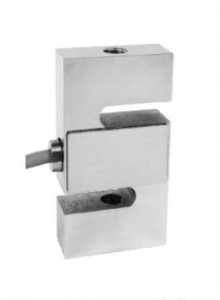YCell Llwythgall drosi grym gwrthrych yn allbwn signal trydanol, ac fe'i defnyddir yn helaeth ym meysydd pwyso, synhwyro grym a mesur pwysau. Bydd yr erthygl hon yn rhoi cyflwyniad manwl i egwyddor weithio, mathau a senarios cymhwysiad Cell Llwyth i helpu darllenwyr i ddeall nodweddion a gwerth cymhwysiad ymarferol y synhwyrydd yn well.
1. Egwyddor weithio Mae egwyddor weithio Cell Llwyth yn seiliedig ar effaith piezoresistif. Mae'n cynnwys sawl prif ran: elastomerau, mesuryddion straen, pontydd a chylchedau prosesu signalau. Pan gymhwysir gwrthrych i'r elastomer, cynhyrchir straen, ac mae'r mesurydd straen yn anffurfio yn ôl maint a chyfeiriad y grym a gymhwysir. Mae mesurydd straen gwrthiant (Strain Gauge) wedi'i osod ar y mesurydd straen, a phan fydd y mesurydd straen yn cael ei anffurfio, bydd gwerth gwrthiant y gwrthiant hefyd yn newid yn unol â hynny. Nesaf, trwy'r bont a'r gylched prosesu signalau, gellir trosi'r newid yng ngwerth gwrthiant y gwrthydd yn allbwn signal trydanol.
2. Math a strwythur Gellir rhannu Celloedd Llwyth yn wahanol fathau yn ôl gofynion y cymhwysiad a'r nodweddion strwythurol. Y rhai cyffredin yw math gwanwyn, math dalen, math cneifio, math ffrithiant a math pwysau. Mae ganddynt strwythurau ac egwyddorion gweithredu ychydig yn wahanol, ond gellir defnyddio'r ddau i fesur maint a chyfeiriad grym. Yn dibynnu ar yr ystod fesur a'r gofynion cywirdeb, mae maint a dyluniad y Gell Llwyth hefyd yn wahanol.
3. Senarios cymhwyso
Pwyso diwydiannol: Defnyddir Cell Llwyth yn helaeth ym maes pwyso diwydiannol i fesur pwysau gwahanol wrthrychau, megis graddfeydd cerbydau, graddfeydd platfform, peiriannau chwistrellu, ac ati. Mae ei gywirdeb uchel a'i berfformiad sefydlog yn gwneud y canlyniadau pwyso yn fwy cywir a dibynadwy.
Ymchwil mecaneg: Mewn ymchwil mecaneg, defnyddir Cell Llwyth i fesur maint a chyfeiriad y grym ar wrthrych mewn arbrawf mecaneg. Er enghraifft, mewn prawf tynnol, defnyddir Cell Llwyth i ganfod cryfder tynnol deunydd. Mewn prawf chwistrell, mae'r Gell Llwyth yn mesur llif a phwysau'r hylif yn y biblinell.
Monitro peirianneg: Ym maes peirianneg, gellir defnyddio Celloedd Llwyth i fonitro llwyth ac anffurfiad strwythurau fel adeiladau, pontydd a llongau. Gall y wybodaeth hon ddarparu data cyfeirio pwysig i beirianwyr i sicrhau diogelwch a dibynadwyedd strwythurau.
Offer meddygol: Mewn offer meddygol, defnyddir Celloedd Llwyth i fesur a monitro grym a phwysau amrywiol offer therapiwtig, megis gwthiad scalpel a grym cymhwyso offeryn deintyddol.
Crynodeb: Mae Celloedd Llwyth yn synhwyrydd mesur grym uwch a dibynadwy a ddefnyddir mewn ystod eang o gymwysiadau. Trwy ddealltwriaeth fanwl o'i egwyddor weithio, gallwn ddeall ei swyddogaeth a'i rôl yn well mewn gwahanol feysydd. Gyda datblygiad technoleg, bydd cymhwysiad Celloedd Llwyth yn dod yn fwyfwy helaeth, a chredir y bydd yn chwarae rhan bwysig mewn mwy o feysydd yn y dyfodol.
Amser postio: Gorff-27-2023
